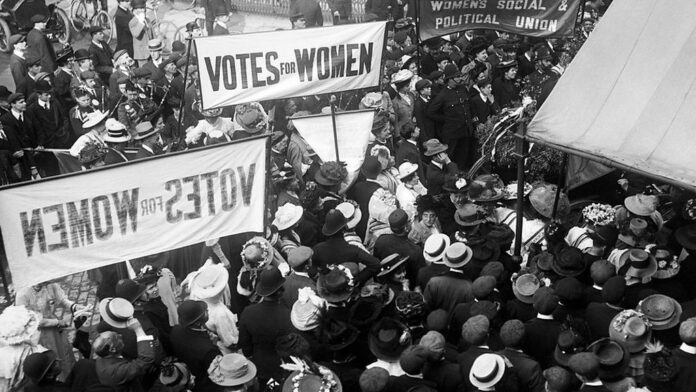The quest for voting rights for women has evolved into a formidable movement that reshaped the socio-political landscape of many nations across the globe. The birth of suffragism was driven by a variety of socio-economic and political factors, as women sought greater inclusion in civic life. This article endeavors to explore the multifaceted nature of this pivotal movement, analyzing its advantages and disadvantages, while providing an academically grounded narrative.
In the annals of history, the women’s suffrage movement represents a culmination of social activism aimed at addressing the systemic disenfranchisement faced by women. Despite the progress made, the discourse surrounding voting rights continues to reflect a complex interplay of benefits and challenges. This exploration intends to dissect these elements, underscoring the significance of understanding both sides of the argument.
The Historical Context: From Marginalization to Empowerment
The movement for women’s voting rights did not emerge in a vacuum. It found its roots in the broader framework of women’s rights, which began gaining momentum in the late 19th century. The Seneca Falls Convention of 1848 is often deemed a watershed moment that galvanized activism and public discourse around gender equality. It culminated in the Declaration of Sentiments, wherein the demand for women’s suffrage was prominently featured.
The Industrial Revolution provided a fertile ground for the suffrage movement to flourish. As women entered the workforce in unprecedented numbers, their participation in social, economic, and political spheres intensified. This shift not only challenged normative gender roles but also necessitated a reevaluation of societal institutions, including the legal and voting systems. Women like Susan B. Anthony and Emmeline Pankhurst emerged as leading figures who relentlessly championed the cause, making indelible contributions to a movement that was, until then, marginalized.
Pros of Women’s Voting Rights: Empowerment and Equality
The suffrage movement heralded numerous advantages, laying the groundwork for a more inclusive political landscape. Voting rights for women symbolize empowerment and equality, enabling women to partake actively in the democratic process. The inclusion of female voices at the ballot box amplified their perspectives, addressing issues that disproportionately affect women—such as reproductive rights, wage inequality, and family law reform.
Furthermore, women’s suffrage catalyzed social change by challenging entrenched patriarchal norms. With more women participating in politics, there was a significant shift in policy-making that reflected the priorities of a more diverse electorate. Research has consistently demonstrated that women tend to advocate for policies that promote social welfare, education, and healthcare, contributing to an enriched dialogue within political spheres.
The presence of women in politics also serves to inspire future generations. Female leaders and lawmakers become role models, fostering aspirations among young girls to pursue careers in civic engagement and activism. This ripple effect underscores the long-term impact of voting rights on shaping societal perceptions of gender roles.
Challenges and Counterarguments: The Complexity of the Movement
Moreover, the intersectionality of the suffrage movement must be acknowledged. The quest for voting rights was not monolithic; it often sidelined women of color, working-class women, and those from marginalized communities. The inclusion of voting rights for all women remains a contentious issue, with systemic barriers still impeding access to the ballot for certain demographics today. This reality raises critical questions about the comprehensiveness of the suffrage movement and whether it lived up to its progressive ideals.
The Politics of Representation: The Necessity of Inclusive Discourse
Analyzing the political representation of women reveals an ongoing struggle for equitable participation. The suffrage movement marked a significant milestone in achieving legal rights; however, substantive representation within political institutions remains disproportionately low. Women of color, particularly, encounter double jeopardy—navigating both gender and racial biases—exacerbating their political underrepresentation.
The historical marginalization of specific groups within the suffrage movement raises important discussions about inclusivity. A broader and more intersectional approach is imperative to ensure diverse voices contribute to the democratic process. It is vital to scrutinize contemporary suffrage efforts through this lens, as the fight for voting rights is intrinsically linked to issues of racial justice, economic equity, and social justice overall.
The Global Perspective: A Comparative Approach to Women’s Suffrage
While the movement for women’s rights in the western context garnered significant attention, it is crucial to recognize that the struggle for suffrage occurred globally. Countries like New Zealand and Finland were pioneers in granting women the right to vote in the early 20th century. Yet, many nations continue to grapple with inequality and disenfranchisement.
Examining voting rights across different cultures reveals various socio-political dynamics at play. Some countries have made strides in enhancing women’s participation in governance, while others remain entrenched in patriarchal structures that inhibit progress. States with restrictive voting laws may inadvertently exacerbate gender imbalances in political representation.
This comparative perspective underscores the necessity for international solidarity among women’s movements. By sharing strategies and learning from one another, activists can develop more effective means of addressing systemic barriers to voting rights.
The Future of Women’s Voting Rights: An Ongoing Journey
The struggle for voting rights for women is far from concluded. Emerging issues—such as voter suppression, gerrymandering, and policies that disproportionately affect women—continue to challenge the achievements of past activists. Today, it is paramount for individuals and civil society as a whole to remain vigilant against any regression of these hard-won rights.
Advocacy for accessible voting mechanisms, such as mail-in ballots and extended voting hours, can mitigate barriers to participation. Moreover, education campaigns dedicated to informing women about their rights are essential to empower the next generation of voters.
In conclusion, the movement for women’s voting rights has undeniably transformed the political landscape, engendering a myriad of benefits while also presenting notable challenges. Understanding the complexity of this movement is vital to ensuring its future successes. As society delves deeper into the ramifications of women’s suffrage, continued discourse about equity and representation will lead to an inclusive democratic process that honors the struggles of those who fought tirelessly for the right to vote.





























